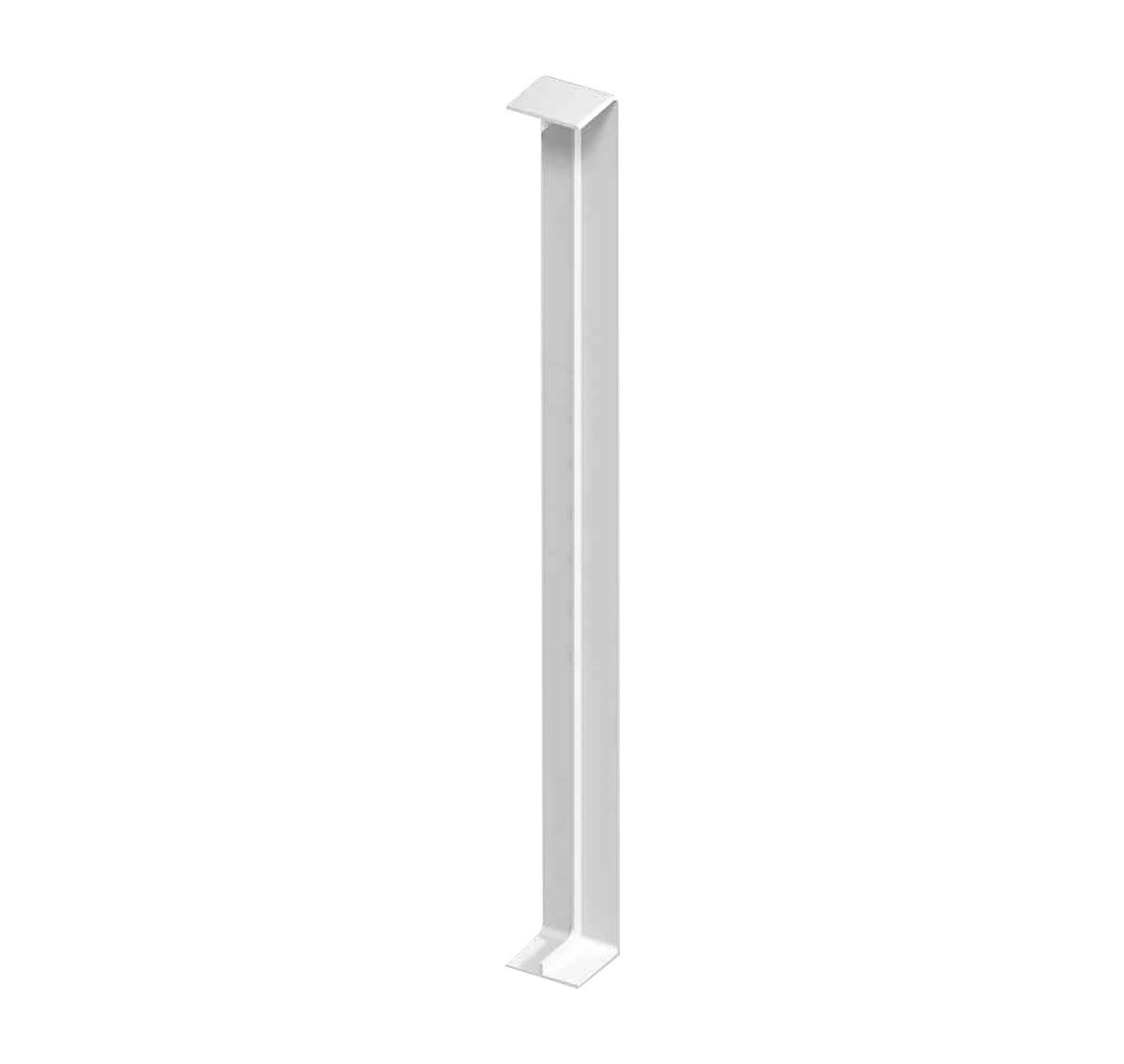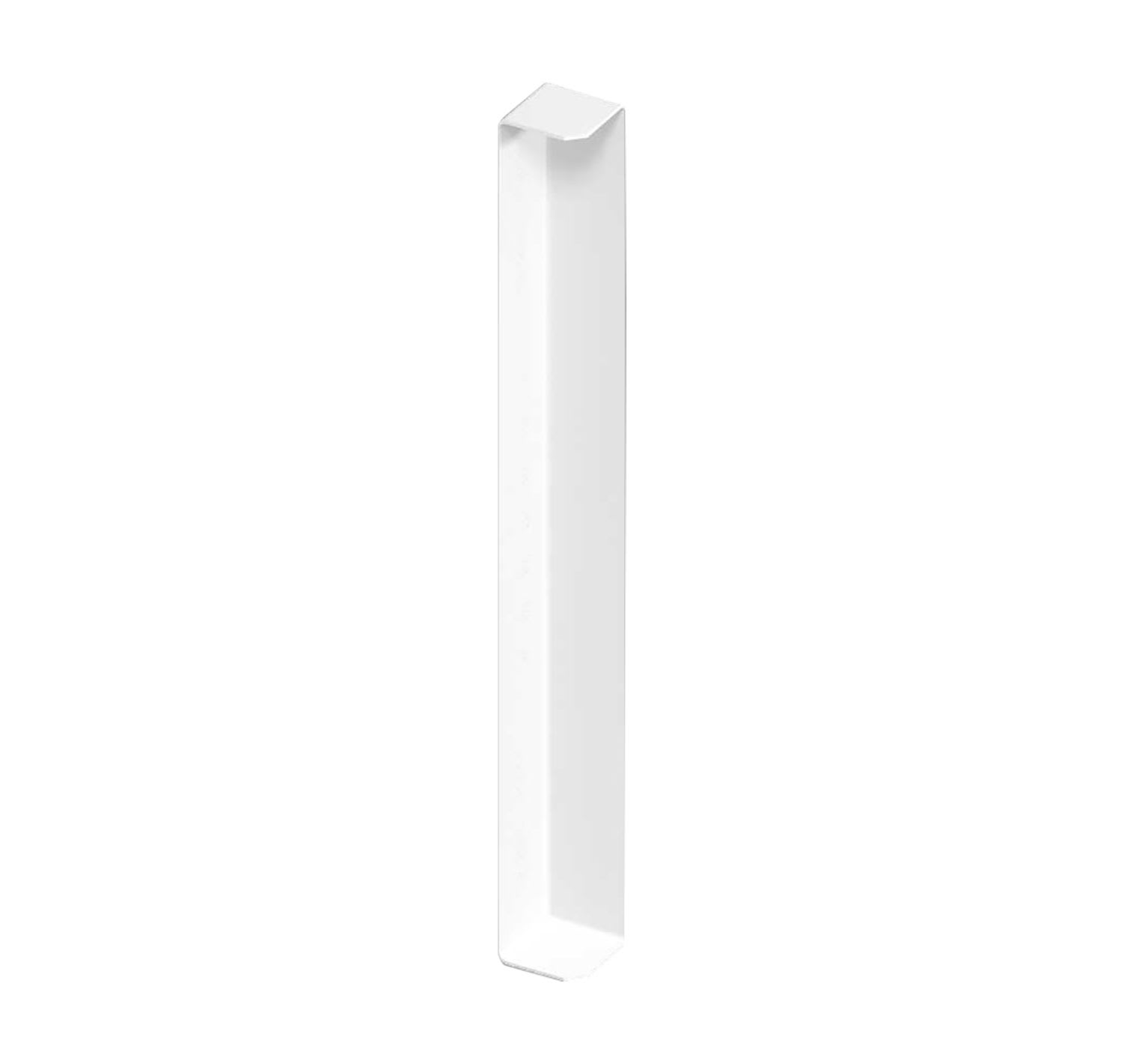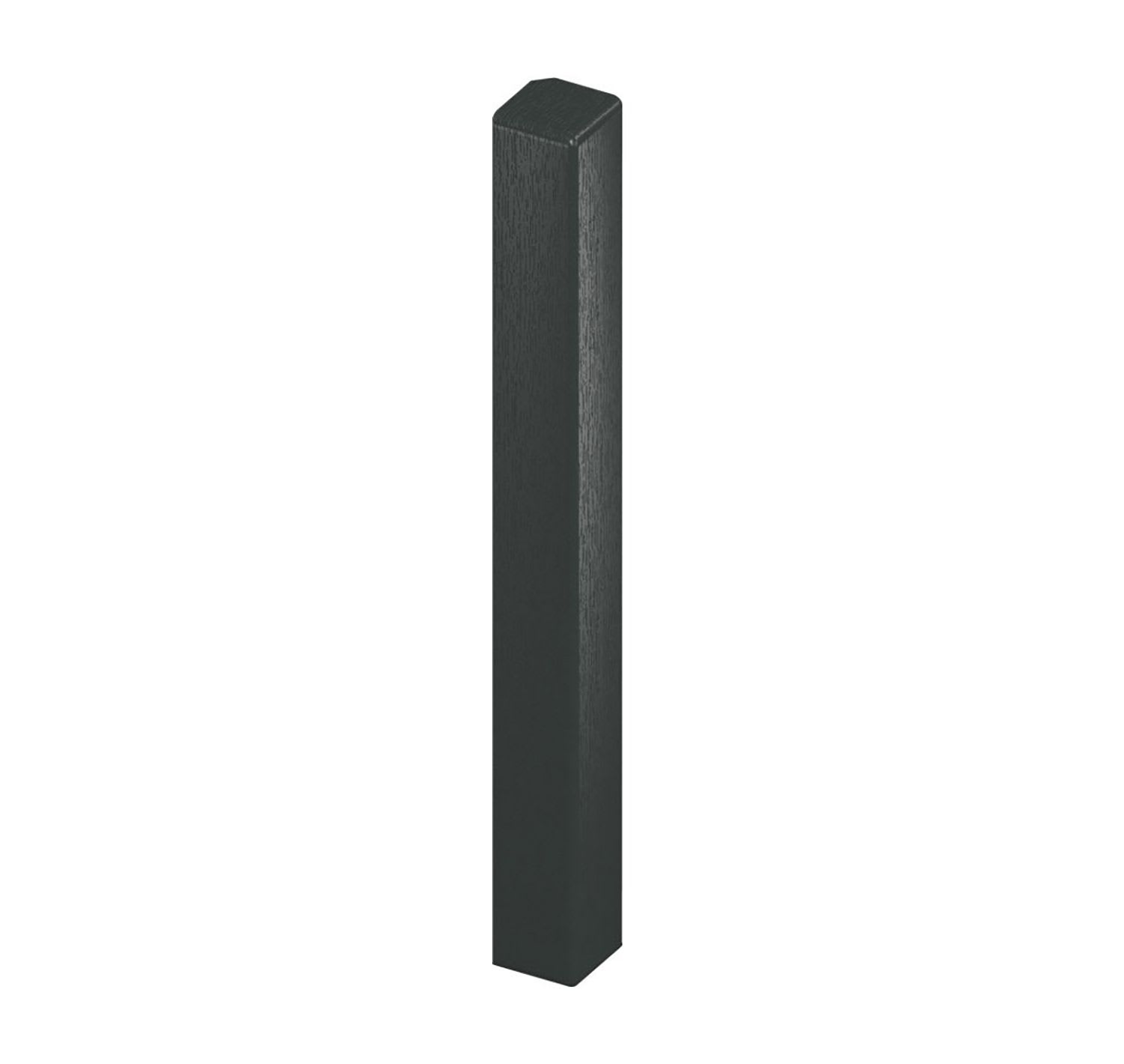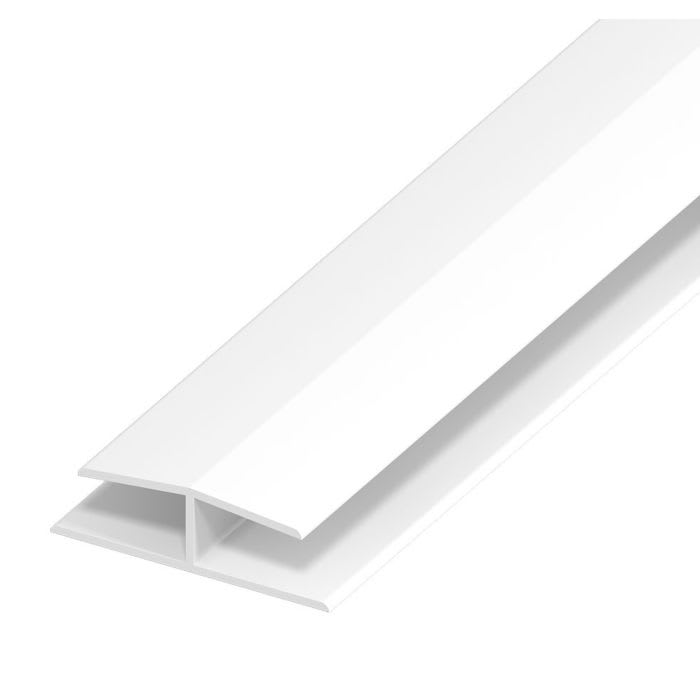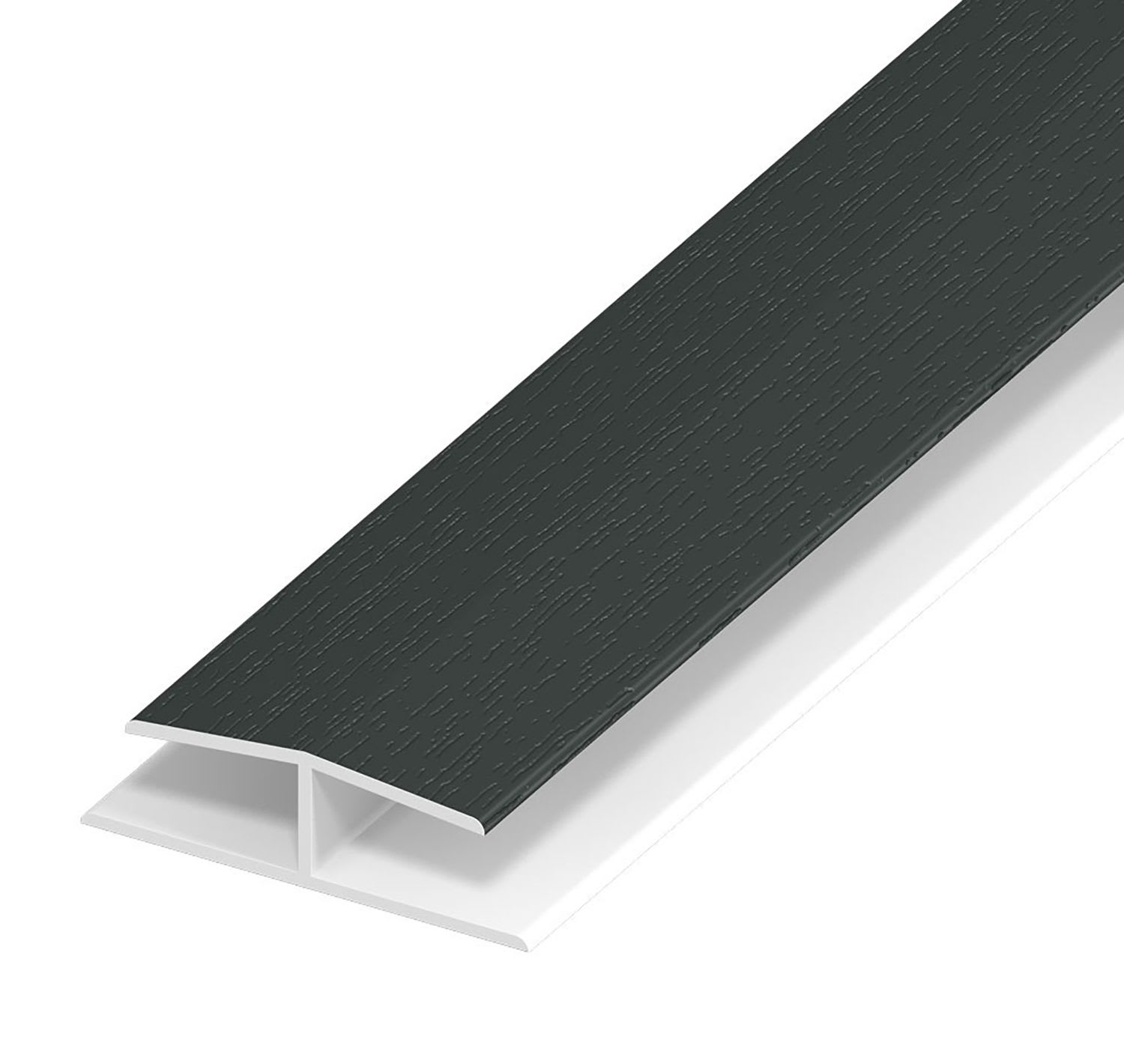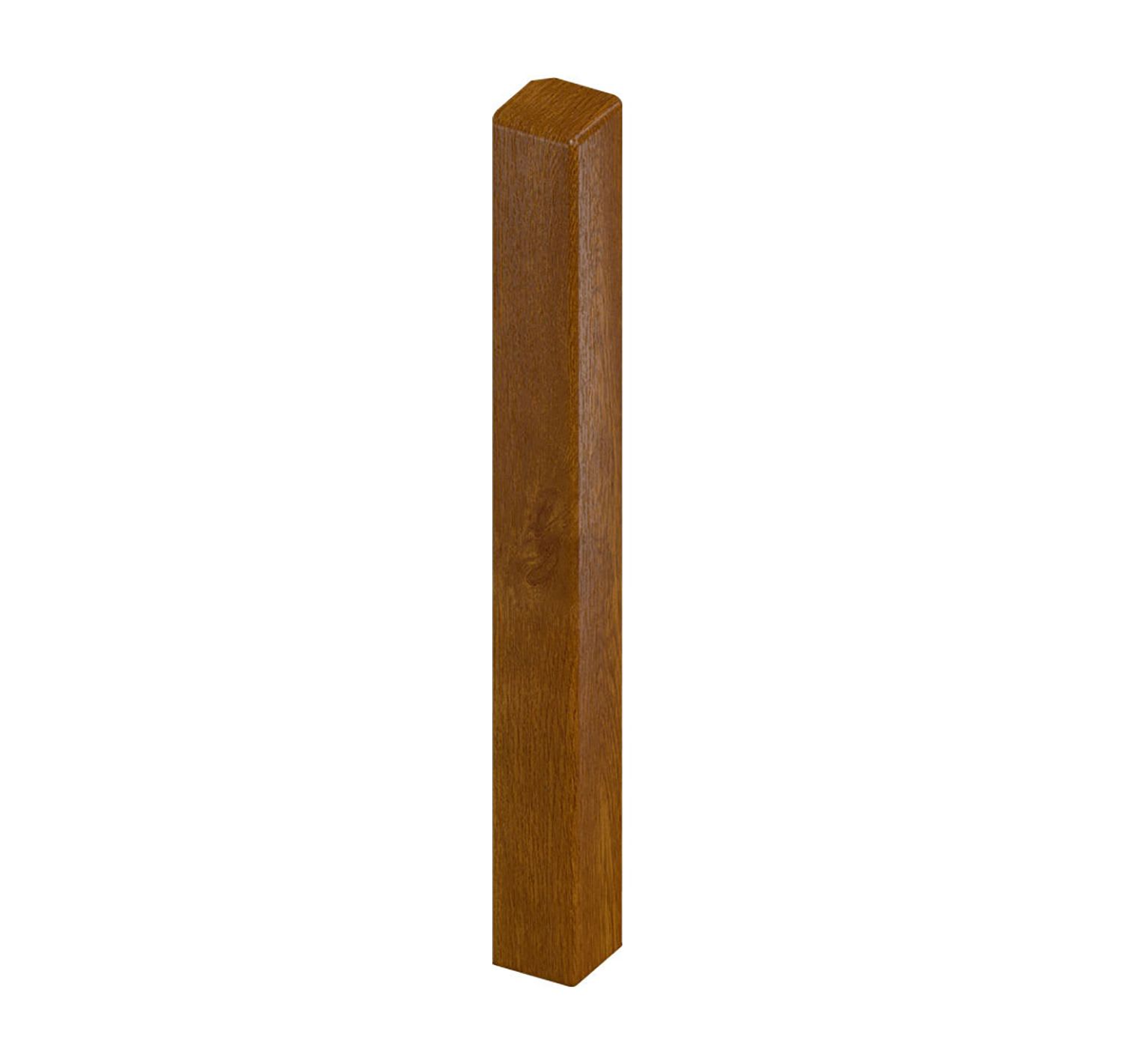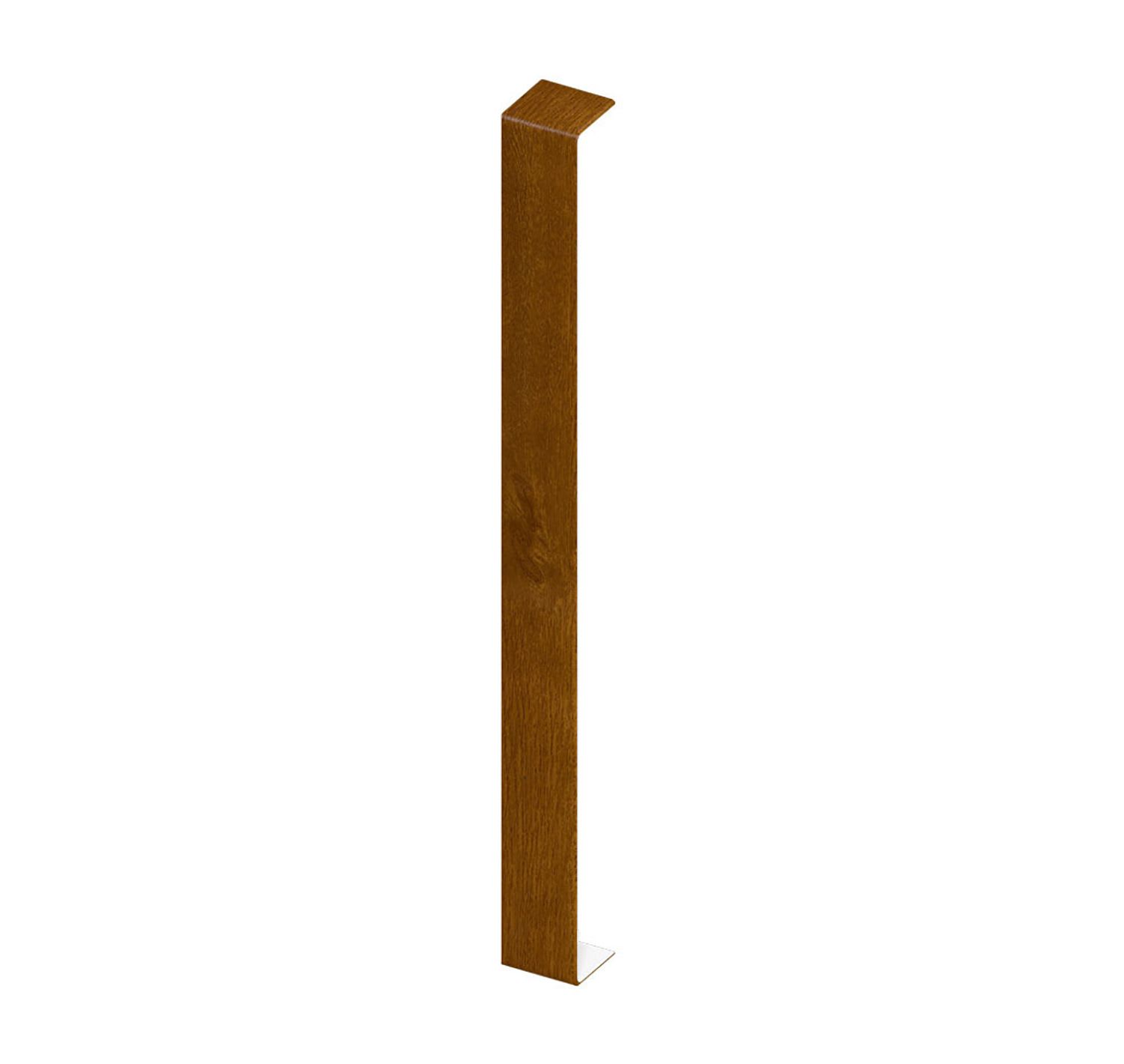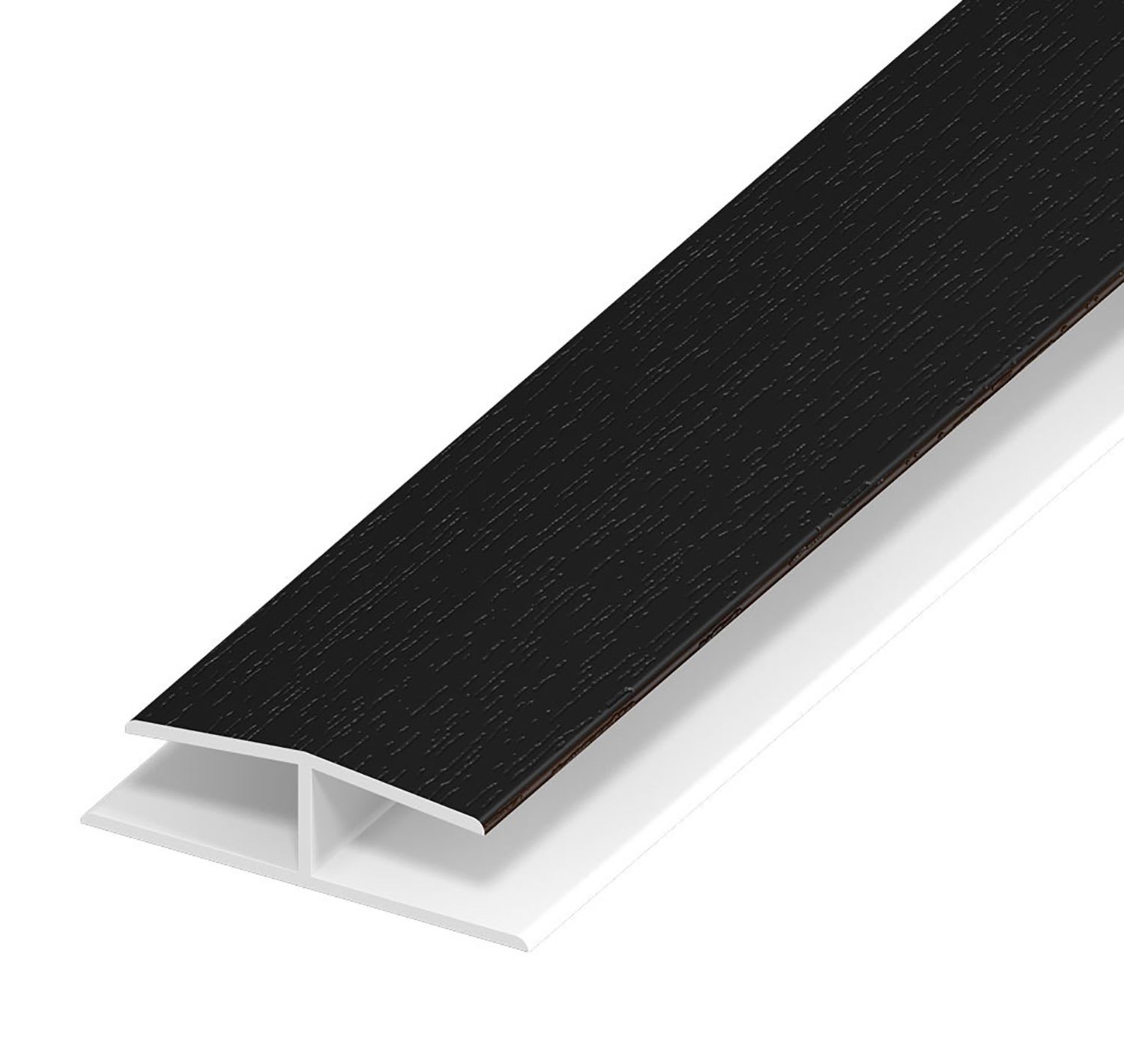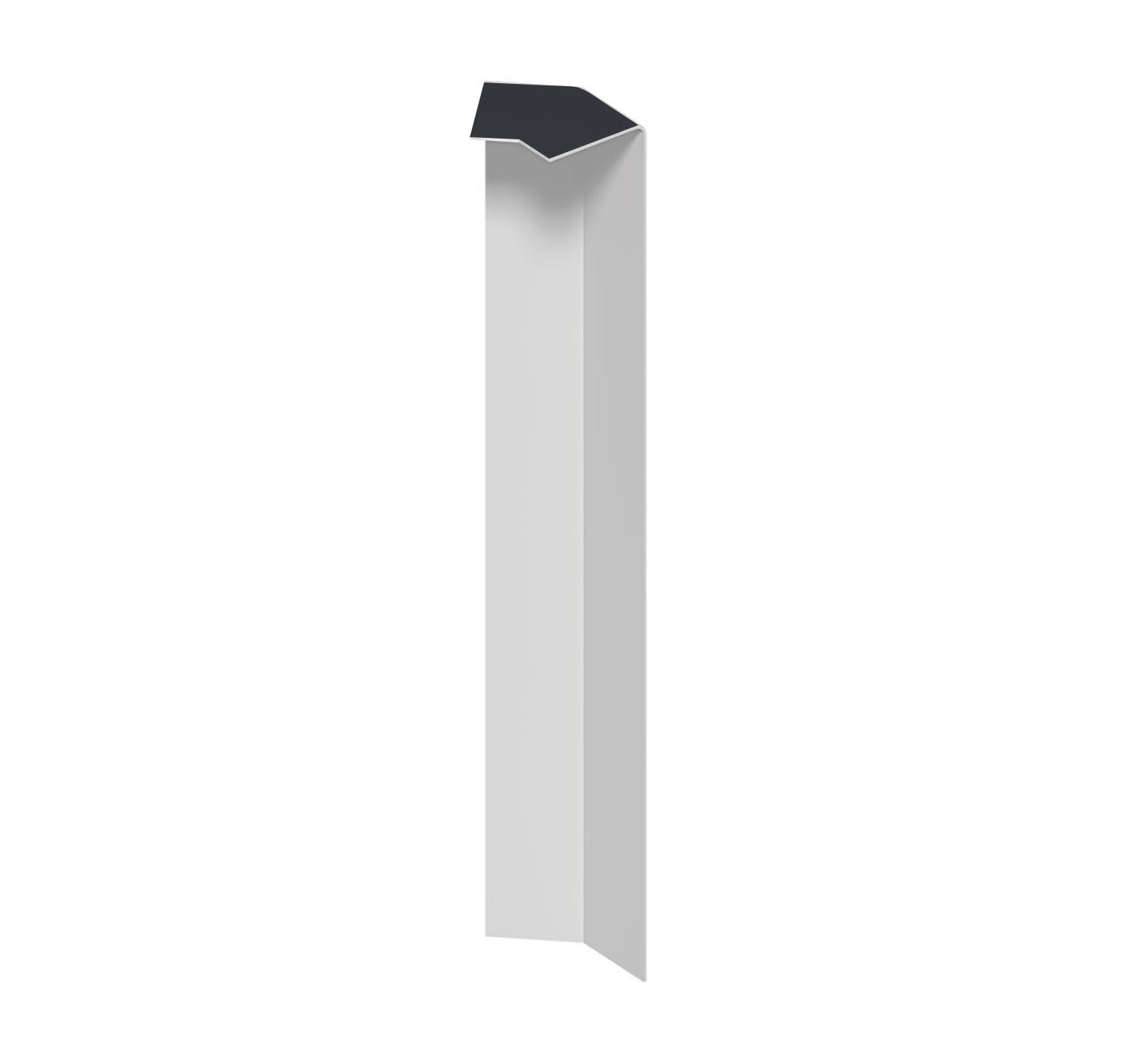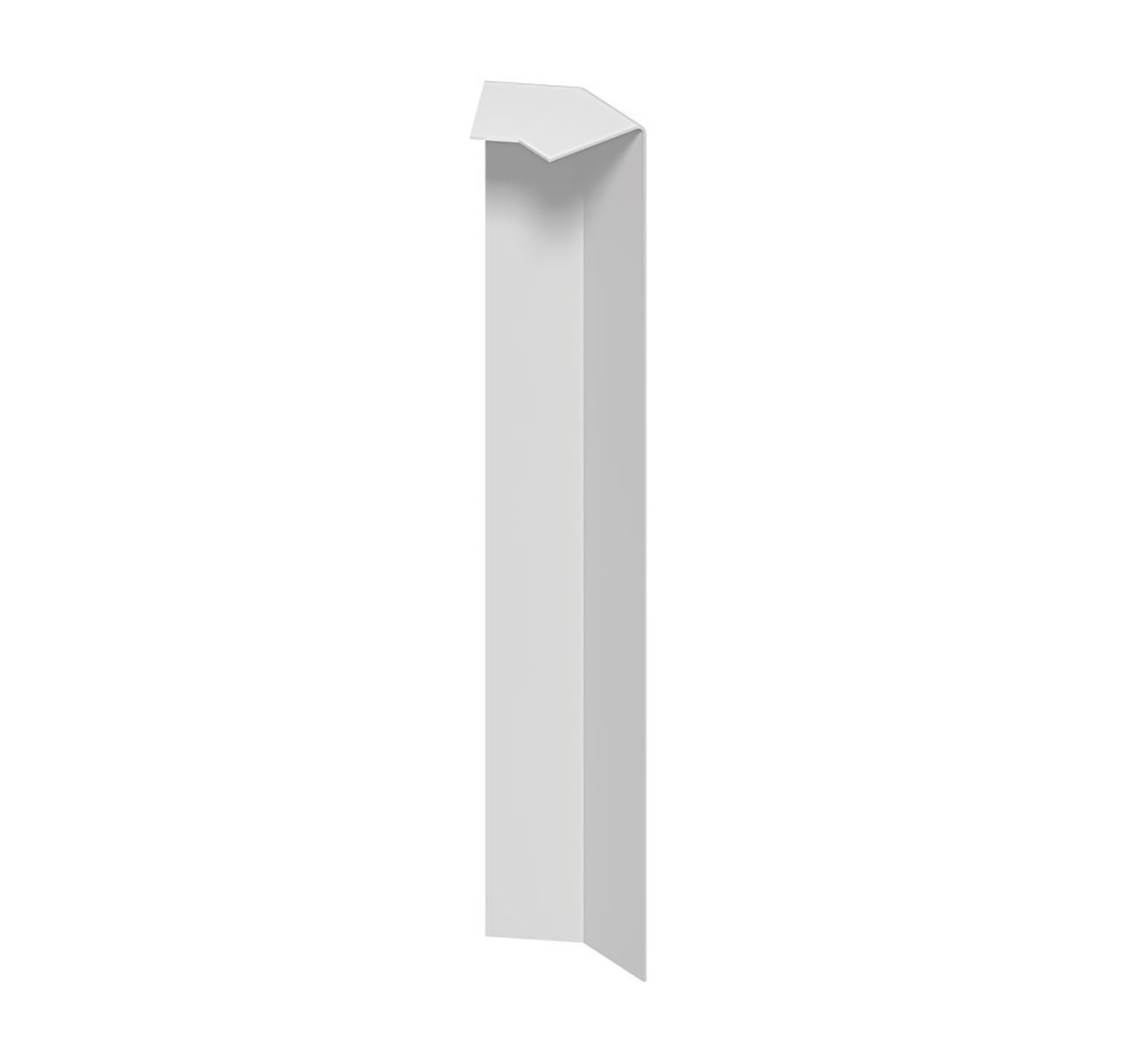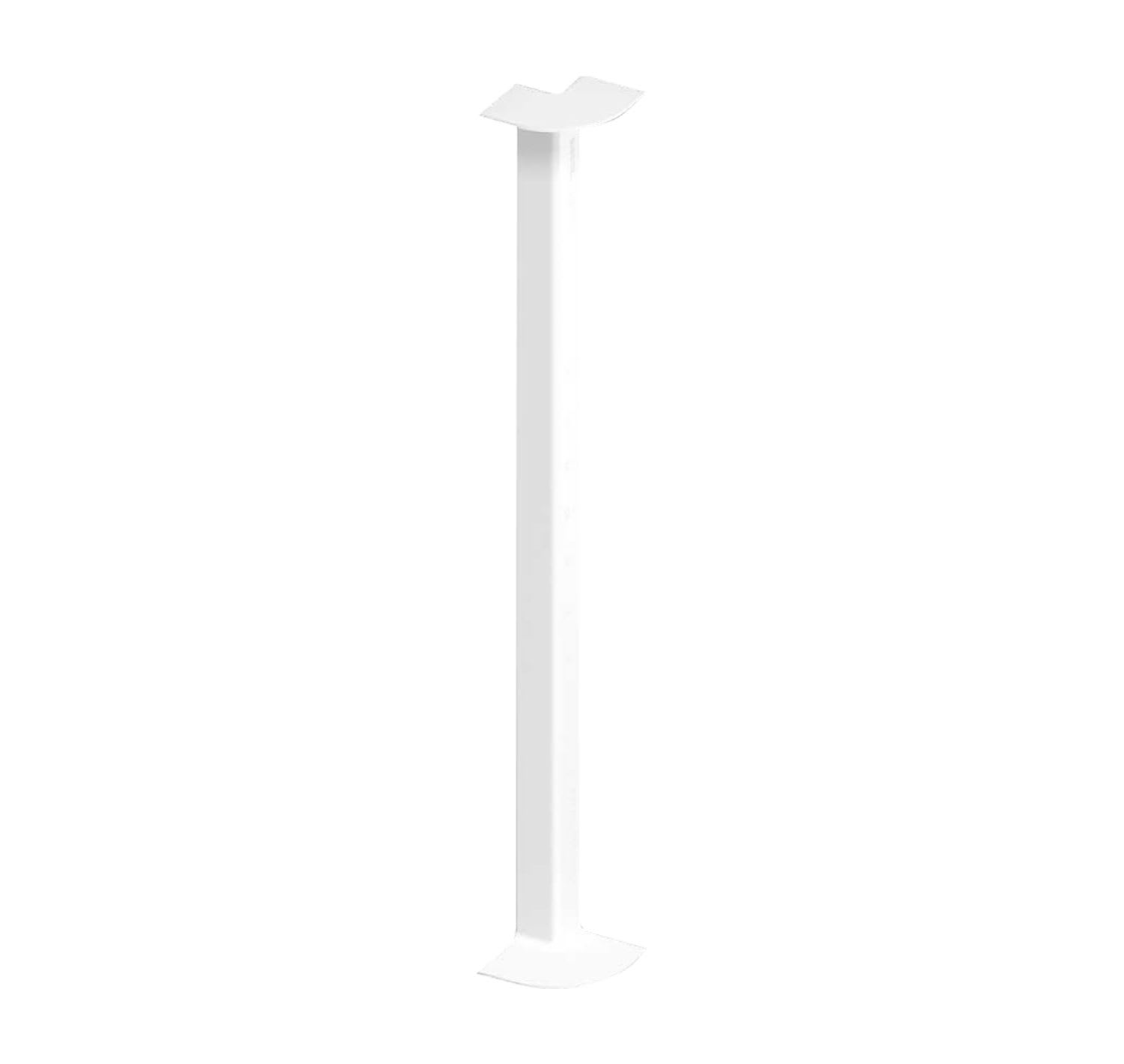Joint Trims
(42 Products)Joint trims are crucial finishing elements within a uPVC roofline system. Designed to match the profile and colour of the main uPVC boards, these trims address the need to join sections cleanly end-to-end, create tidy transitions at internal and external corners, and professionally terminate runs with neat end caps. They essentially act as the 'connective tissue' of the installation, ensuring structural continuity and enhanced weather sealing at junctions as well as providing a smooth, cohesive visual finish.
What Are Joint Trims?
UPVC joint and finishing trims are fundamental to the technical performance, regulatory compliance, and aesthetic quality of modern roofline systems. These precision-engineered uPVC profiles are indispensable for the correct installation and long-term performance of roofline systems using components like fascias, soffits, and bargeboards.
Functionally, they serve specific purposes beyond simple aesthetics: inline joiners securely link board sections while often incorporating features to manage thermal expansion and contraction inherent in uPVC; external and internal corner pieces create weather-tight seals at crucial directional changes; and stop ends provide a finished, protective capping to prevent water ingress and pest access at termination points.
By bridging gaps, managing angles, and sealing ends, these trims, manufactured to match the exact profile and colour specifications of the main boards, are vital for ensuring the structural integrity, water-shedding capability, and cohesive visual appearance of uPVC rooflines.
Benefits
- Accommodating Thermal Movement: To cover and manage the necessary expansion/contraction gaps left between board ends, preventing buckling in hot weather (compression) or joints pulling apart in cold weather (contraction).
- Providing Aesthetic Continuity: To conceal cut ends of boards, ensuring a neat, seamless, and professional appearance across the entire roofline installation.
- Weather Sealing: To provide protection at junctions (joints, corners, abutments) against water ingress and draughts when installed correctly with appropriate sealants where required.
- System Integration: To facilitate neat transitions between different roofline elements (fascia-to-soffit, fascia-to-bargeboard, board-to-wall).
Types of uPVC Roofline Trims
- Inline Joint Trims:
- Fascia Joints: Typically H-section cover strips or moulded profiles precisely matching the fascia board design. They bridge the gap between two abutting fascia boards in a straight run. Often supplied as 'double-ended' trims allowing two uses per piece.
- Soffit Joints: Commonly H-section connectors (like our 40mm White Hollow Soffit Joint Trim) which accept board edges from both sides, ideal for flat or hollow soffit planks. J-Trims may serve as starter/finishing trims for soffit runs, and sometimes simple flat cover strips are used.
- Corner Trims:
- External Corners: Create neat junctions at 90° or 135° external angles. Fascia corners are usually larger, wrapping around both the fascia and soffit return. Our 300mm Square Corner Trims (White & Anthracite) are intended for 90° external corners on square profile systems.
- Internal Corners: Used where fascias/soffits meet at an internal 90° angle.
- Edge & Finishing Trims:
- D-Section / Quadrant / Cloaking Fillets: Versatile trims often used for decorative finishing, masking small gaps against walls, or finishing edges neatly (e.g., the stocked 25mm D-Section Trims).
- F-Sections: Provide a channel to support a soffit board edge against a wall or to neatly finish the exposed edge of a soffit panel.
- Angle Trims: Used for finishing returns or edges, particularly where cladding meets roofline elements.
- Universal Trims:
- Designed for adaptability, often comprising multiple parts or flexible sections to handle non-standard angles or serve multiple purposes (2-Part Universal Trims).
- End Caps: Small moulded pieces designed to neatly close off the exposed end of a fascia or capping board profile where a run terminates.
Installation Guide: Fitting Your uPVC Trims
Disclaimer: This guide provides general advice. Always refer to specific manufacturer instructions for the products you are using. If you are unsure about any aspect of roofline installation, seek guidance from a qualified professional. Safety first - take appropriate precautions when working at height.
Tools Required:
- Fine-tooth saw (for clean cuts on uPVC)
- Tape measure & Pencil
- Safety glasses
- Sealant gun (for applying silicone sealant)
- Mitre box (recommended for accurate angle cuts if needed, though dedicated corners reduce this)
- uPVC adhesive (e.g., solvent-free superglue or specific uPVC cement)
- Low-modulus neutral cure silicone sealant (for weather sealing where required)
- Plastic-headed pins or nails (e.g., Polytop pins) - use stainless steel for longevity
- Clean cloths
Preparation:
- Ensure fascia and soffit boards are correctly measured and cut cleanly and squarely. De-burr any rough edges.
- Crucially, allow for thermal expansion: Leave a minimum 5mm gap at each end of every fascia and soffit board where it meets a joint trim, corner trim, or abutment. This gap allows the uPVC to expand in heat without buckling. Trims are designed to cover this gap.
- Dry-fit trims before final fixing to ensure a good fit and alignment.
Fixing Methods:
- Joint Trims (Inline & Corners): These often clip or slide into place over the expansion gap. Apply a bead of suitable uPVC adhesive (like superglue) to the inside edges of the trim where it contacts the boards for a secure bond. For corners, also apply adhesive to the joining faces. Pinning through the trim into the boards with Polytop pins can provide additional mechanical fixing, especially on corners.
- End Caps: Apply uPVC adhesive to the inside surfaces of the end cap before pushing firmly onto the end of the fascia/bargeboard profile.
- Finishing Trims (D-Section, F-Section, etc.): Fix according to their specific design – usually with adhesive and/or pins. F-sections may be fixed first to provide a channel for soffit boards.
- Weather Sealing: While trims cover joints, applying a bead of low-modulus neutral cure silicone sealant behind corner trims or where trims meet walls (abutments) provides enhanced weather protection. Ensure sealant is compatible with uPVC. Avoid using sealant as the primary fixing method for structural trims like corners.
Best Practices & Common Mistakes:
- DO leave the expansion gaps – failure to do so is a common cause of buckling.
- DO ensure trims match the board profile (e.g., Square, Ogee) for a correct fit and appearance.
- DO use sharp, appropriate tools for clean cuts.
- DO use stainless steel pins/nails to avoid rust marks.
- DON'T overtighten fixings, which can distort the uPVC.
- DON'T rely solely on silicone sealant for structural fixing.
- DON'T bridge expansion gaps with fixings intended for the main boards.
Frequently Asked Joint Trims Questions
What Problems Can Occur If I Don't Leave Enough Room For Thermal Movement Behind uPVC Fascia Joint Covers?
Failing to leave adequate expansion gaps (typically 5mm per board end) at joints, corners, and abutments is a common installation error. If the uPVC boards have no room to expand in warmer temperatures, they can exert significant pressure, potentially causing buckling, distortion of the fascia line, and strain on fixings. Joint trims are designed to conceal these gaps, ensuring performance and aesthetics.
How Resistant Are Coloured uPVC Roofline Trims, Like Anthracite Grey Or Black, To Sun Fading And Discolouration In The UK Climate?
Quality uPVC trims manufactured for exterior use incorporate UV stabilisers specifically designed to withstand exposure to sunlight. While all materials may experience very slight changes over many years, modern coloured uPVC profiles (including popular greys, blacks, and whites) offer excellent colour stability and are formulated to resist significant fading or yellowing for the expected lifespan of the roofline system in typical UK weather conditions.
Can Stubborn Marks Like Green Algae Or Bird Droppings Be Safely Cleaned From White uPVC Joint Covers Without Harming The Surface?
Yes, generally. For routine dirt, warm soapy water is sufficient. For tougher marks like algae or bird droppings on white uPVC trims, proprietary uPVC cleaners or a non-abrasive cream cleaner can often be used effectively.
Always try on an inconspicuous area first and avoid scouring pads, abrasive powders, or strong solvents which can permanently damage the plastic finish. Rinse thoroughly with clean water afterwards.

